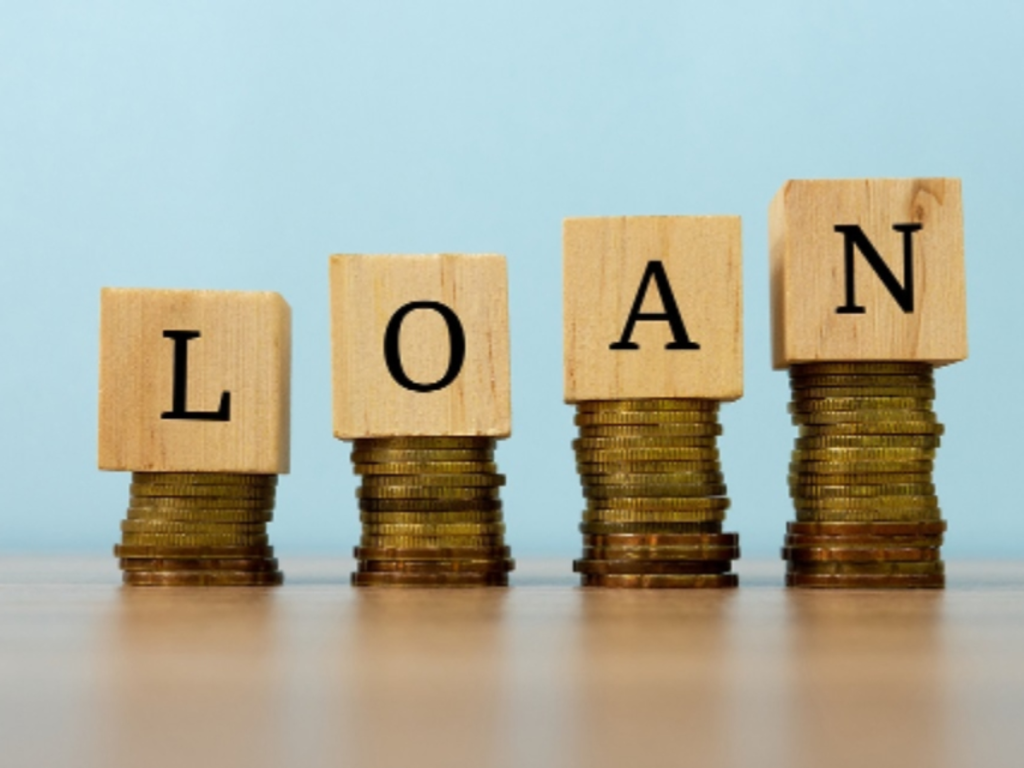Introduction
Personal loans probably represent one of the most versatile forms of finance currently at one’s service, accommodating even broad expediencies besides contingencies, as diverse and different in type or breed as their reason. For managing high-interest-rate debt and all the way down to funding household renovation work, personal loans cover every reason customized in your unique scenario. But before getting into the world of borrowing, one must first understand the minutest detail-types of personal loans, interest rates, and how to go about paying them back. This guide will enable you to make good choices in the handling of personal loans.
What is a Personal Loan?
A personal loan is a fixed sum of money that one borrows from a bank, credit union, or online lender, which one must pay back over a set period of time, usually with interest. Unlike credit cards, personal loans offer a lump sum upfront, usually with fixed payments. Because personal loans can be used for nearly anything, this makes them a very attractive option for borrowers who need financial flexibility.
Types of Personal Loans
There are many types of personal loans that bestow different financial needs. The detailed breakdown of the main types follows below.
1. Secured Personal Loans
In secured personal loans, the borrower is supposed to offer security for the loan, which generally consists of a car, savings account, or real estate. These types of loans have lower interest rates because, in case of non-payment, the lender can recover their money by selling the pledged security. This kind of loan turns out to be very good for people with mediocre credit who can use their assets as leverage.
2. Unsecured Personal Loans
Personal loans are unsecured. This means they have no collateral. In this case, the lender considers your credit score to determine whether to approve or reject your loan application. These loans have higher interest rates than secured loans because there is no asset that can be recovered in case of default. Many borrowers with excellent credit scores often get the best terms on unsecured loans.
3. Debt Consolidation Loans
A debt consolidation loan can be very helpful if there are a number of high-interest debts, such as credit card balances. This is the type of loan that combines all your debts into one, often at a lower interest rate, making repayment far simpler and possibly saving you money in the long run.
4. Co-Signed Loans
A co-signed loan involves another person, usually a family member or close friend, agreeing to share the responsibility of the loan. Where a borrower has thin or bad credit history, adding a co-signer with excellent credit may result in approval and more favorable rates, but this does not impact the shared responsibility for payment by both parties.
5. Specialized Personal Loans
- Home Improvement Loans: Loans meant to finance renovation or repairs.
- Medical Loans: Those availed to pay for certain surgeries or treatments.
- Wedding Loans: For funding certain occasions such as weddings or anniversaries.
- Travel Loans: For those who want to spend their holidays within the country or abroad.
How Interest Rates Work for a Personal Loan
One of the most critical factors in determining the affordability of a personal loan is the interest rates. Here’s an in-depth look at how they work and what affects them:
Fixed vs. Variable Interest Rates
- Fixed Interest Rates: These rates remain the same throughout the loan term, ensuring consistent monthly payments. Fixed rates are ideal for borrowers who want stability and predictability in their budget.
- Variable Interest Rates: These vary in accord with market conditions or benchmark rates, such as the prime rate. While these might be low to begin with, compared to fixed rates, they carry a potential risk of rising over time, thereby increasing the amount one pays each month.
**Factors That Influence Interest Rates
- Credit Score: Lenders use your credit score to evaluate the likelihood of repayment. A higher score often results in lower interest rates, while borrowers with lower scores may face higher rates or stricter terms.
- Loan Term: The shorter the loan term, the less risk for the lender, and the interest rates are usually lower. With longer terms, even though the rates may be a bit higher, your monthly payments could be more affordable.
- Debt-to-Income (DTI) Ratio: Lenders evaluate your DTI, which measures the sum of your monthly debt payments in relation to your income. The lower your DTI ratio, the healthier your finances, which could mean better rates.
- Type of Lender: Banks, credit unions, and online lenders might have different rates of interest. It pays to shop around and compare the various deals available.
Repayment Options for Personal Loans
Repaying a personal loan involves more than simply making monthly payments. Choosing the right repayment strategy can save money and reduce financial stress. Below are the most common repayment structures and tips for optimizing them:
Standard Monthly Installments
The most common payment method is the one in which you pay a fixed amount every month over the time span of the loan. In most instances, your monthly repayments will contain both the principal-the amount borrowed-and interest.
Biweekly Payments
Some lenders allow for a biweekly payment, which means you make half of a monthly payment every two weeks. You end up making 26 payments in a year, or basically, the equivalent of 13 full payments a year, thereby paying off your loan much quicker and reducing interest overall.
Early Repayment and Prepayment Penalties
Save on interest: If you can afford to repay earlier and your loan allows it, you may save on interest. Some loans have prepayment penalties, which involve some cost for paying off the debt early. Always read your loan agreement for prepayment terms.
Steps to Choose the Right Personal Loan
The selection of the appropriate personal loan, therefore, calls for due consideration of your financial situation and the available options. Here’s a step-by-step approach to ensure you make the best choice:
- Assess Your Financial Needs
Determine why you need the loan and how much you can afford to borrow without straining your finances. Borrowing more than you need will increase the repayment burden. - Compare Lenders and Loan Offers
Research different lenders and compare for the most competitive interest rates and terms. Pay attention to factors such as loan fees, repayment flexibility, and customer reviews. - Check Eligibility Requirements
Ensure you meet the lender’s eligibility criteria including credit score, income level, and employment status before applying. - Read the Fine Print
Read the loan agreement carefully to know all the hidden fees, prepayment penalties, or any other terms that can affect your repayment.
Pros and Cons of Personal Loans
Pros
- Flexibility: Emergencies or planned expenses, it can be used for anything.
- Fixed Repayment Schedule: Predictable monthly payments make it easier to budget.
- Potential for Debt Consolidation: Simplify your finances by combining multiple debts into one loan with a lower interest rate.
Drawbacks
- Higher Interest Rates for Poor Credit: Borrowers with low credit scores may face higher costs.
- Fees and Penalties: Some loans include origination fees, late payment fees, or prepayment penalties.
- Overborrowing risk: If not well articulated, there’s a tendency to overborrow beyond your repayment limit.
How to Qualify for a Personal Loan
Qualifying for a personal loan encompasses meeting set requirements by lenders. In most cases, this encompasses elements of your credit history, income, and your general financial affairs. The detail below outlines how lenders will be looking at your application:
1. Credit Score
Your credit score is important in determining your eligibility for a personal loan. It tells about your borrowing history and reflects your financial responsibility.
- Excellent Credit (Above 750): Get the best loan terms and lowest interest rates.
- Good Credit (700-749): Competitive rates and a high likelihood of approval.
- Fair Credit (640-699): Access to moderate interest rates with limited options in loans.
- Poor Credit (Below 640): Higher interest rates or difficulty qualifying without collateral or a co-signer.
2. Income and Employment
The lenders ask for confirmation of a steady income with which you will be able to repay the loan. This may include pay stubs, bank statements, or tax returns. Some lenders also consider your employment history as part of the evaluation process.
3. Debt-to-Income (DTI) Ratio
DTI ratio is a major determinant for lenders as it defines how much of your income is deviated toward the repayment of debts. A lower DTI ratio-which is generally below 36%-shows better financial stability and increases your chances of approval.
4. Loan Purpose
Still, personal loans are flexible, but sometimes, the lender can still request the purpose for taking the loan; stating that gives a good indication of the creditworthiness by the customer to be able to handle this sort of loan.
5. Collateral (for Secured Loans)
The applicant has to pledge an asset when applying for a secured loan. The quality or value of the pledged collateral will, hence, impact the offered loan amount and eventually the loan terms.
How to Improve Your Chances of Approval
If you are concerned about qualifying for a personal loan, there are a number of steps you can take to improve your chances:
- Improve Your Credit Score: Pay bills on time, lower credit card balances, and dispute any errors on your credit report.
- Increase Your Income: Consider taking on additional work or freelancing to increase your earnings.
- Pay Off Existing Debt: This can lower your debt-to-income ratio and thus make you look like a better candidate.
- Apply with a Co-Signer: In case your credit is not that good, a co-signer with a good credit profile might fetch you much better terms.
- Your Bank or Credit Union: Begin Here: Most of the time, the institutions where you already have an account will give you better terms, considering you already have a relationship there.
Conclusion
A personal loan can be a very powerful financial tool if used responsibly, providing flexibility and predictable repayment terms. Knowing the type of personal loan available to you, understanding the interest rates, and choosing the right repayment plan according to your financial goal will help make the art of borrowing workable and easy. Research options and compare, know your financial health, and borrow only what you comfortably can pay back. An informed approach will make personal loans your aid for fulfilling all your financial desires without stress and tension.

